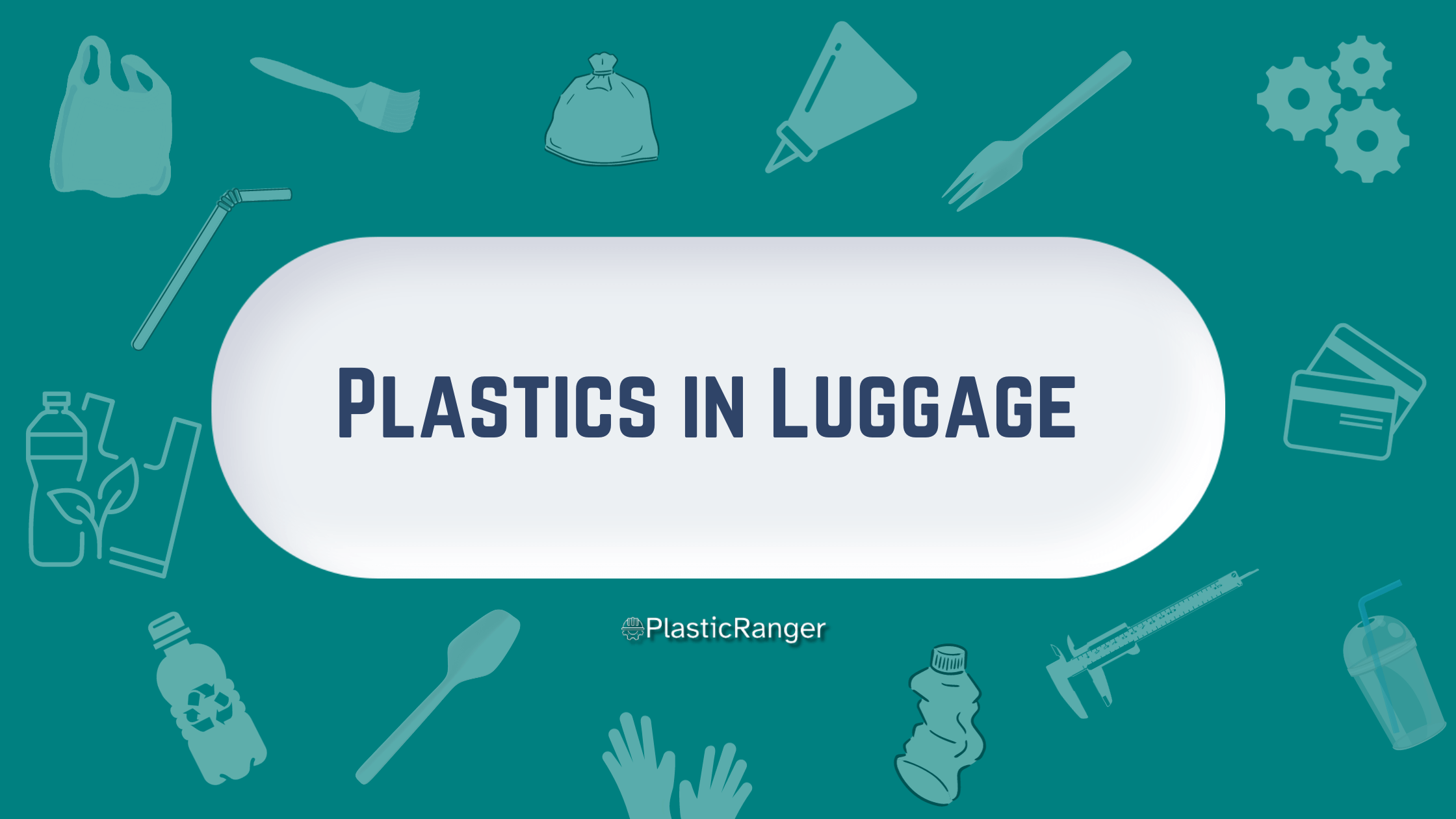The luggage industry has evolved from leather trunks to lightweight and durable products, primarily due to advances in material science. While various materials like leather, nylon, and aluminum find their way into luggage construction, plastics are indispensable in the current paradigm. These materials meet the contemporary demand for lightweight, durable, cost-effective travel solutions.
Plastics Used in Luggage
Not all plastics are created equal. This article will explore the various types of plastics employed in luggage manufacturing, their properties, advantages, disadvantages, and innovative trends.

Commonly Used Plastics
Polycarbonate
Properties: High impact resistance, heat resistance, mechanical properties, and clarity.
Advantages: Extremely durable and can withstand significant physical stress making it useful in the automobile and aviation industries. It’s often transparent, allowing for visually stunning designs.
Disadvantages: More expensive and can be subject to scratches.
ABS (Acrylonitrile Butadiene Styrene)
Properties: Good impact resistance, compressive strength, and hardness.
Advantages: More economical than polycarbonate. It’s lighter, which can be beneficial for meeting airline weight limits.
Disadvantages: Less durable compared to polycarbonate and may deform under extreme conditions.
Polypropylene
Properties: Chemical resistance, fatigue resistance.
Advantages: Extremely lightweight and resistant to chemicals. Often used for less-expensive luggage.
Disadvantages: Not as durable as polycarbonate or ABS, particularly in cold temperatures.
High-Density Polyethylene (HDPE)
Properties: High tensile strength, thermal properties, and chemical resistance.
Advantages: Common in high-quality adventure or rugged-use luggage.
Disadvantages: Heavy, making it less ideal for typical air travel scenarios.
Comparative Analysis
Cost-Effectiveness: ABS wins in the cost category, followed by Polypropylene, HDPE, and Polycarbonate.
Durability: Polycarbonate takes the lead, followed by HDPE, ABS, and Polypropylene.
Weight: Polypropylene which also is an excellent UV resistant plastic is the lightest, followed by ABS, Polycarbonate, and HDPE.
Aesthetic Versatility: Polycarbonate allows for the most design freedom, including transparent and hard-shell artistic designs.
Innovative Trends
Recycled Plastics: Eco-conscious brands are beginning to use recycled plastics, meeting durability and sustainability needs.
Nanocomposites: Including nanomaterials in plastics like polycarbonate can improve their already impressive durability.
Smart Materials: Plastics embedded with IoT (Internet of Things) technology for tracking, durability analysis, and more.
Recommendations for Consumers
For those looking for the crème de la crème, luggage made from polycarbonate stands out as the best option due to its unparalleled durability and aesthetic versatility. Rimowa’s polycarbonate luggage series is a top-of-the-line choice. For a more economical but still high-quality choice, consider products from Samsonite made from ABS.
Safety Considerations
It’s crucial to note that although these plastics are generally safe, they can deform under extreme temperatures. Thus, avoid exposing your plastic luggage to intense cold or heat for extended periods.
Conclusion
Plastic materials have revolutionized luggage manufacturing by providing a range of options to balance cost, durability, and weight. Polycarbonate and ABS remain popular, with polypropylene and HDPE catering to specific niches. As consumers become increasingly savvy and environmentally conscious, the trend is shifting toward sustainable, smart luggage options.
Quick Navigation
